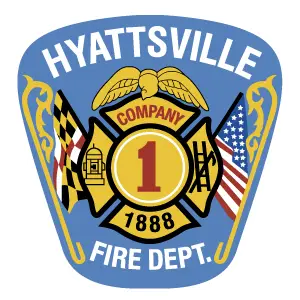
How We're Organized
Like many corporations, we have two distinct yet tightly integrated units of our organization – an administrative arm and an operations arm. The administrative unit is lead by a president, vice-president, secretary, treasurer and a board of directors. The president serves as the CEO – Chief Executive Officer of the fire department.
The operations division of the fire company is lead by the fire chief. He serves as the COO or Chief Operating Officer of the corporation. He oversees what is called the ‘chain of command.’ This chain of command is very important in that it provides clear direction, lines of communications, and accountability for everyone involved in the chain.
On an incident scene, the chain of command provides for identifying areas of responsibility and accountability for the personal safety of every individual working within the incident command system.
Under this system, each level only reports to one supervisor. Firefighters report to a Sergeant, who then reports to a Lieutenant, who then reports to a Captain. The Captains report to the Assistant or Deputy Chiefs, who are responsible to the Fire Chief.
Teamwork is the foundation of our success – during an emergency and back at the station. Before you can become a good leader, you need to learn to be a good follower. Knowing and understanding how you fit into the chain of command will be one of the most important lessons you can learn. Know your position and play it well.
You will receive a copy of our current organizational chart – or chain of command – during your new recruit orientation.
How We Respond
To accommodate your busy and varying lifestyle, we have pre-scheduled duty shifts typically set a month ahead of time, including evening and weekend assignments. This ensures we have minimum staffing at all times. The HVFD responds to more than 6,000 fire, rescue and EMS calls annually.
Volunteers are required to participate in a duty shift program, outlined later in this document. Beyond the minimum expectations, many of our members provide additional staffing and support for responses and special events as time permits. Our bunkroom (live-in) members are also required to be on duty a minimum four nights a week.
The Hyattsville VFD is dispatched through the Prince George’s County Public Safety 911 center. Volunteers available at the station respond when dispatched. In times of high load when additional crews and staffing are needed, text messaging and emails alert members.
The Hyattsville VFD provides essential engine, rescue squad, aerial ladder and basic/advanced life support services to our communities.
The department also has a state-of-the-art heavy duty rescue squad. Known for its expertise in auto extrication, the department has utilized an Amkus Hydraulic Rescue System since 1993. The department responds to many entanglements involving autos and other vehicles, primarily along the East West Highway, U.S. Route 1 and Baltimore-Washington Parkway corridors. The unit also has equipment and crew training to act as a Rapid Intervention Team, aimed at rescuing trapped or injured firefighters.
Two basic life support ambulances are among our busiest units, responding to just about every response imaginable for injuries and illnesses. These units can be upgraded to Paramedic Ambulances as staffing permits.
Our units are equipped with the latest fire and EMS technologies, including Automatic External Defibrillators (AEDs), Thermal Imagers and significant additional specialized equipment on the squad.
The Hyattsville VFD responds to a highly diverse and populated area. Our primary (first due) response area includes two Metrorail stations, Prince George’s Plaza, multiple high rise and apartment communities, numerous nursing homes and schools. Additionally, we’re typically dispatched on major incidents at the sprawling University of Maryland College Park campus.

